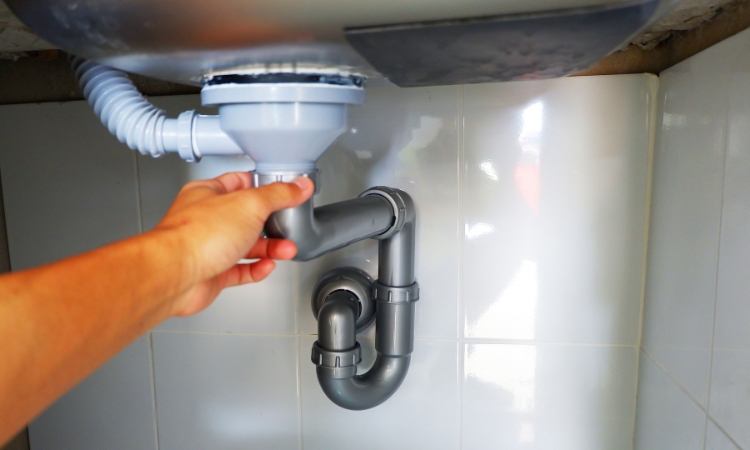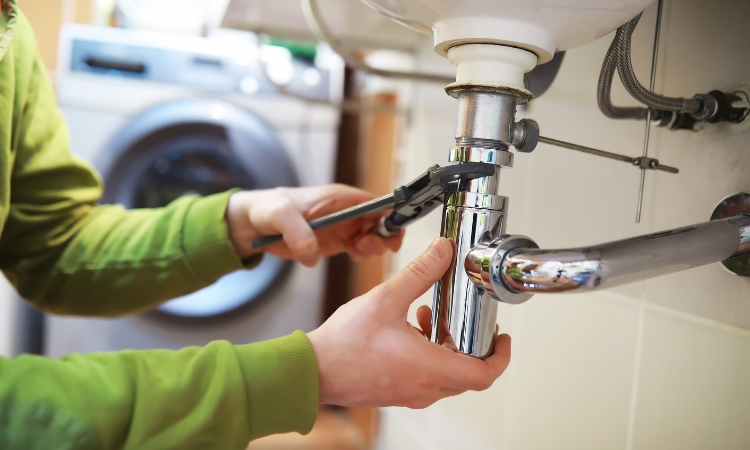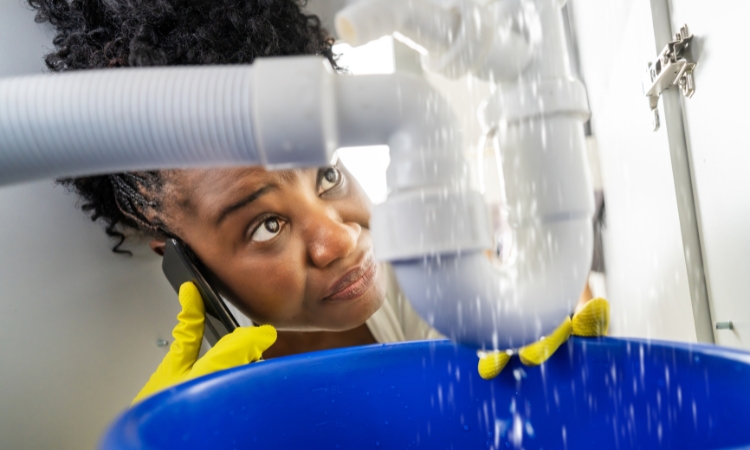It can be a nuisance for homeowners to fix a leaky sink drain pipe, leading to water damage, unpleasant odors, and increased utility bills. In Singapore, where humidity levels are already high, a leaking pipe can cause moisture problems, potentially causing mold growth. Fortunately, fixing a leaky sink drain pipe is a manageable DIY task that can save you time and money. This article will guide you through the process of identifying, diagnosing, and repairing a leaky sink drain pipe.
The Pre-requisites to Fix a Sink Drain Pipe
If you want to repair a leaky sink drain pipe, the first step is to identify the source of the leak. Water can travel along the pipes and drip from a different location than the actual leak. Here’s how to pinpoint the leak:
- Look under the sink for any signs of water. Common indicators include water stains, damp spots, and puddles.
- Turn on the faucet and let the water run for a few minutes. Then, check the pipes and connections for drips or moisture.
- Dry the pipes with a cloth, then run the water again to see if you can spot any new leaks. This will help you identify the exact location of the leak.
Diagnosing the Cause
Once you’ve identified where the leak is coming from, the next step is to diagnose the cause. Common causes of a leaky sink drain pipe include:
- Loose Connections: Over time, the connections between pipes can loosen, causing leaks.
- Worn-Out Washers: Washers can degrade over time, leading to leaks at connection points.
- Cracked Pipes: Pipes can crack due to wear and tear, causing water seepage.
- Corroded Pipes: Corrosion can cause holes in metal pipes, resulting in leaks.
- Improper Installation: If the pipes were not installed correctly, they might develop leaks.
How to Fix a Leaky Drain Pipe?
LS Plumber Singapore discovers a pathway to fix a leaky sink drain pipe based on their experience in bathroom flood repair, clogged drains, clogged sinks repair, and toilet leak repair. Let’s go through the guide to save money and time.

Tools and Materials Needed
Before you begin to fix a leaking sink pipe, gather the necessary tools and materials. These typically include:
- Adjustable wrench
- Plumber’s tape
- Pipe wrench
- Replacement washers
- Replacement pipes or pipe sections
- Bucket
- Cleaning cloth
- Plumber’s putty or silicone sealant
1. Turn Off the Water Supply
Before starting any repair work, turn off the water supply to the sink. This can usually be done by turning the valves located under the sink. If there are no individual shut-off valves, turn off the main water supply to your home.
2. Place a Bucket Under the Sink
Place a bucket under the sink to catch any water that may spill during the repair. This will help keep your workspace dry and prevent water damage to your cabinets or floor.
3. Loosen the Slip Nuts
Using an adjustable wrench or pipe wrench, loosen the slip nuts that connect the sink drain pipe to the sink and the wall pipe. Be prepared for some water to spill out when you loosen the connections.
4. Remove the Drain Pipe
Carefully remove the drain pipe from under the sink. Inspect it for any signs of wear and tear, cracks, or corrosion. If the pipe is damaged, you will need to replace it.
5. Replace Washers and Gaskets
If the washers or gaskets are worn out, replace them with new ones. This is a common cause of leaks and an easy fix. Make sure to use the correct size and type of washer for your specific pipe fittings.
6. Apply Plumber’s Tape
Wrap the plumber’s tape around the threads of the pipe fittings. This helps create a watertight seal when you reassemble the pipes. Make sure to wrap the tape clockwise around the threads.
7. Reassemble the Pipes
Reconnect the drain pipe to the sink and the wall pipe. Tighten the slip nuts by hand first, then use the wrench to give them an extra quarter turn. Be careful not to overtighten, as this can damage the pipes and cause new leaks.

8. Test for Leaks
Turn the water supply back on and run the faucet. Check for any leaks at the connections. If you see any water dripping, tighten the connections slightly more and recheck.
9. Seal the Joints
If the connections are still leaking, apply a plumber’s putty or silicone sealant around the joints. This provides an extra layer of protection against leaks. Allow the sealant to dry according to the manufacturer’s instructions before using the sink again.
When to Call a Professional
While fixing a leaky sink drain pipe is often straightforward, there are times when it’s best to call a professional plumber. If you’re unable to identify the source of the leak, if the pipes are severely corroded or damaged, or if you’re uncomfortable performing the repairs yourself, a professional like LS Plumber Singapore can provide expert assistance.
Conclusion
It is a manageable task to fix a leaky sink drain pipe that can prevent water damage and save you money on utility bills. By following the steps outlined in this guide, you can identify, diagnose, and repair the leak efficiently. Always prioritize safety, use the right tools and materials, and perform regular maintenance to keep your plumbing system in top condition. If in doubt, don’t hesitate to seek professional help to ensure the job is done correctly. With a little effort and attention, you can keep your sink drain pipes leak-free and functioning smoothly.
